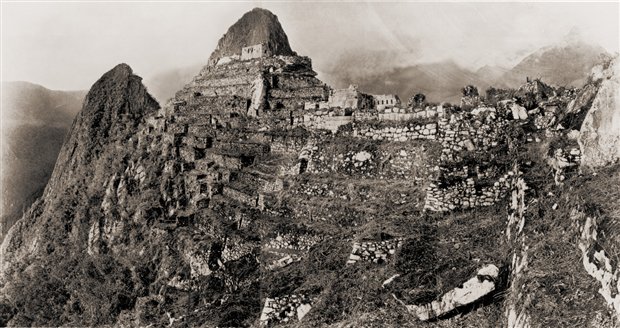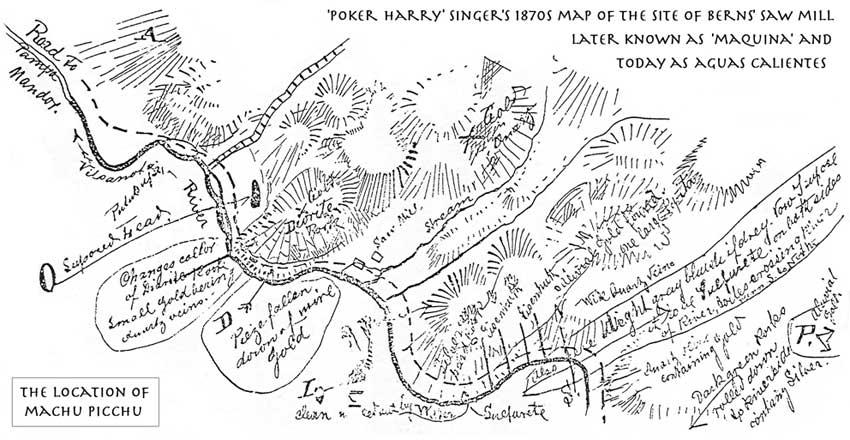German May Have Looted Machu Picchu Long Before Hiram Bingham Arrived
posted on June 9th, 2008 in Archaeology, Did a German Discover Machu Picchu?, Incas, Machu Picchu, Peru, Recent Discoveries
German may have found, looted Inca city
June 5, 2008
Newscientist.com
LIMA, Peru — The jungle-shrouded Inca citadel of Machu Picchu may have been rediscovered – and looted – decades before the Yale scholar credited with the find first got there, a researcher said Thursday.
Most academics say Yale University’s Hiram Bingham III rediscovered the site in Peru’s verdant southeastern Andes during a 1911 expedition.
But Paolo Greer, a retired Alaska oil pipeline foreman, says otherwise. Thirty years of digging through files in the United States and Peru led him to maps and documents showing that a German businessman named Augusto R. Berns got there first…
Berns purchased land across from Machu Picchu in 1867, and an 1887 document even shows he set up a company to plunder the site, Greer told The Associated Press.
Berns wrote that Machu Picchu “‘will undoubtedly contain objects of great value, and form part of those treasures of the Incas,'” Greer said.
Peruvian historian Mariana Mould de Pease backs Greer’s claim. She said she found in Yale University archives a letter of understanding between Berns and Peru’s then-president to pillage the site, as long as the Peruvian government received 10 percent of the profits.
“He was a scammer,” Greer said of Berns. “He was trying to get money.”
Greer said he uncovered other documents showing that Berns, an engineer, had previously set up a gold mining company near Machu Picchu, even though the granite cliffs in the area hold little, if any gold.
David Ugarte Vega, the head of the Department of Anthropology and Archaeology at the University of San Antonio Abad in Cuzco, who has studied Machu Picchu for more than 30 years, said Greer’s theory is plausible, but that more investigation is needed.
“A lot of evidence has shown that there were many foreign explorers before Bingham,” Ugarte Vega said in a telephone interview. “With all the wealth that existed in Machu Picchu, it could have been looted before (Bingham), but I can’t say one way or the other without more evidence.”
Even if Bingham – who was led to Machu Picchu by a local Quechua-speaking farmer – wasn’t the first explorer to rediscover the site, he did not leave empty-handed. In 2006, Peru demanded that Yale University return the collection of artifacts Binghman took from Machu Picchu, a complex of stone buildings built by the Incas in the 1400s.
Yale last year agreed to return about 4,000 pieces that had been taken from the site. The two sides agreed in principle to cosponsor a traveling expedition featuring the pieces, and later a museum in Cuzco, the ancient Inca capital. But they have been unable to reach a final agreement on mummies, ceramics, bones and other artifacts.
Greer’s research could mean that even more valuable pieces were sacked from Machu Picchu before Bingham arrived.
“What Yale got was the leftovers,” said Alex Chepstow-Lusty, a British paleoecologist based in Cuzco, who reviewed Greer’s research.


